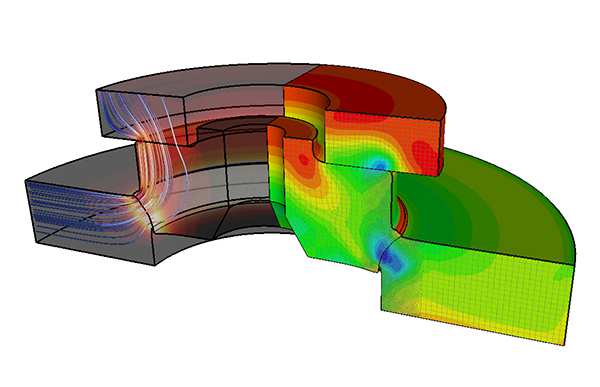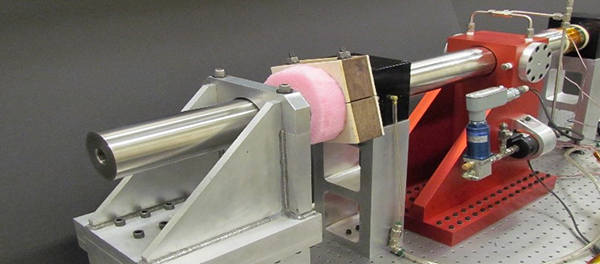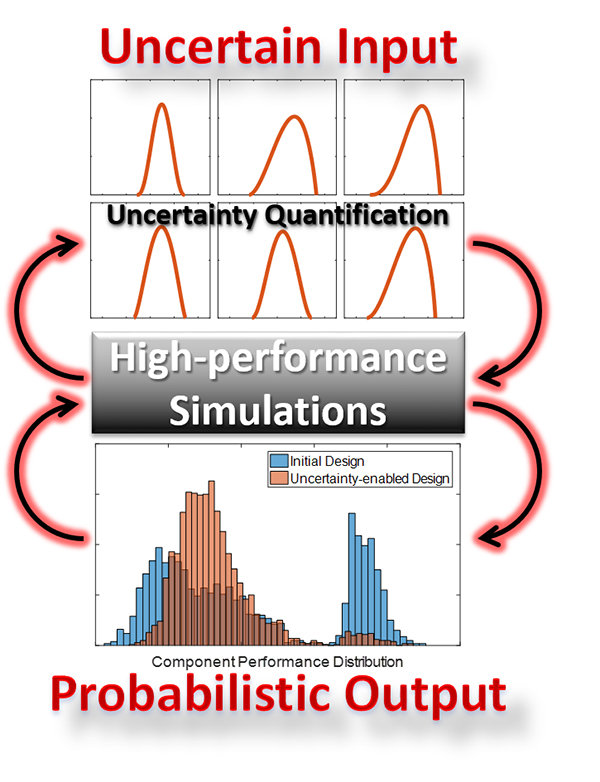Visualizing complex multiphysics processes

Illustration of the complex multiphysics modeling required to understand material properties and residual stress evolution during and after manufacturing processes. An electric current heats and eventually welds two parts, leaving a complex residual stress state that evolves while cooling to room temperature.
Sandia’s Multiphysics Modeling and Simulation organization developed a capability to predict residual stress evolution through manufacturing processes and extreme plastic deformations. The new capability allows designers and analysts to visualize complex multiphysics processes and residual stress evolution in a way that was previously not possible. The developments have immediate impact and application areas that include assessing variability, improving manufacturing processes, helping with SFI investigations, and enabling future Gas Transfer System reservoir designs. (8200)

Engineering Science and NW engineers established a new test capability to provide extreme mechanical shock environments using a Hopkinson Bar in support of electronic neutron generator (ELNG) qualification tests for three nuclear weapon systems. The team successfully addressed the unique experimental challenge of demonstrating ELNG functional operation in sync with the arrival of the shock pulse. This mechanical shock capability is now accessible for other components and systems. These repeatable and controlled tests have reduced risk for the NW program and have the potential for future cost savings. (1500, 2700)
A new launch accelerometer design

The High-Efficiency Adaptable Telemetry Transmitter (HEATT)
Enabled by cross-center teaming, a new launch accelerometer has been designed that is more tolerant to fabrication, assembly, and environment uncertainties. The development of a physics-based, nonlinear fluid and mechanical model empowered by uncertainty quantification has revealed behavior previously undetected by traditional deterministic analyses, quantified statistical performance of the existing design, and elucidated parameter variations that significantly impact performance. Ultimately, this has contributed to new launch accelerometer designs, specifications, and screening techniques to significantly improve margin despite uncertainties introduced through fabrication and assembly. (1500, 2600)